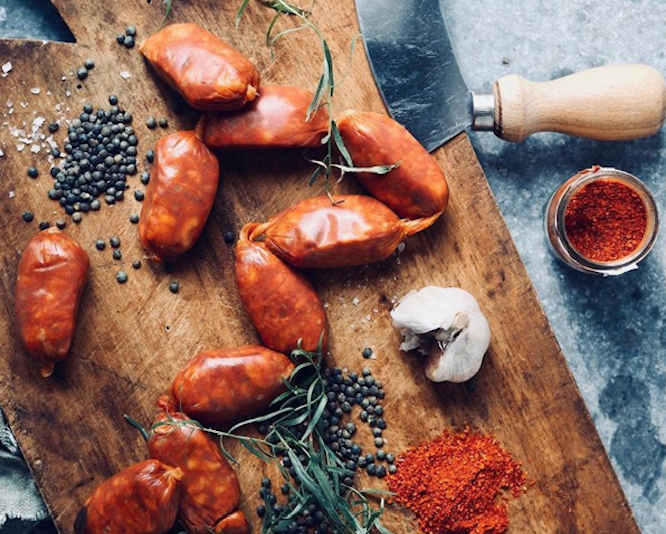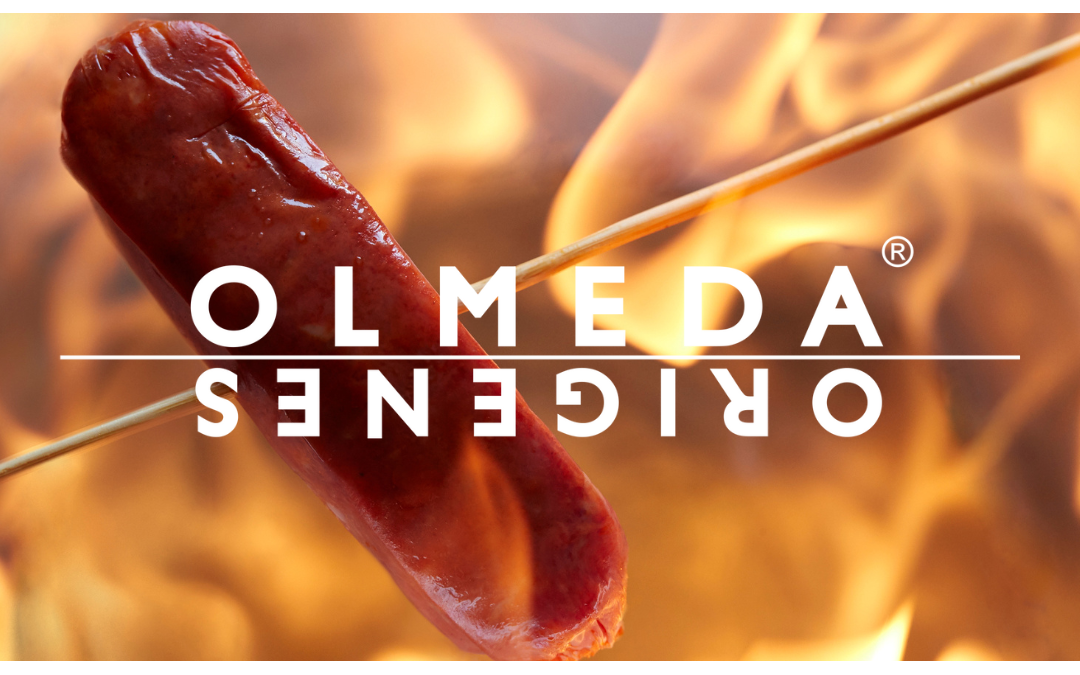12 Jul Discover the Authentic Flavor of Olmeda Orígenes Chorizo, Your Perfect Barbecue Companion
In the world of barbecues, the choice of chorizo can make the difference between a common culinary experience and an extraordinary one. In this regard, Olmeda Orígenes Chorizo stands out as the ultimate option to elevate your grill sessions to new heights.
What is the best chorizo for barbecue?
Olmeda Orígenes barbecue chorizo is known worldwide as an essential element for summer grilling. With summer hotter than ever, it’s time for a barbecue, and what could be better for a barbecue than chorizo? With its distinctive red color and traditional recipe with paprika, any barbecue would be incomplete without chorizo. How do you like it? If you like it spicy, you must definitely try our Baby Chorizo for grilling from Olmeda Orígenes, made with spicy paprika and a favorite among chefs!
¿What makes an authentic Spanish chorizo? ¿How is chorizo made?
Olmeda Orígenes barbecue chorizo is made in Arbizu, Navarra. With the finest selection of pork meat and fat, natural spices, and of course, the characteristic paprika. But… what makes our barbecue chorizo so special? Our barbecue chorizo is 100% natural! The only preservative in our chorizo is actually a natural preservative: rosemary extract.
We can proudly display our clean label, so the ingredients in Olmeda Orígenes Sweet Barbecue Chorizo are as follows: Lean pork meat and pork belly, sweet paprika, salt, garlic, and natural antioxidant (rosemary extract).
¿What is the difference between barbecue chorizo and chistorra?
To become a true expert in Spanish cuisine, you definitely need to know how to differentiate between barbecue chorizo and chistorra.
The key difference between chistorra and chorizo lies mainly in size and the drying process.
Olmeda Orígenes Chistorra is a fresh sausage that only dries for 2 days and requires cooking, while barbecue chorizo requires 5 days of drying due to its size.
The caliber is the first obvious difference; chistorra is much longer and thinner than chorizo, partly due to the type of casing traditionally used. Casings can be of natural or edible collagen origin, depending on availability. The next difference is more subtle and lies in the paprika used to make the sausage. While chistorra uses paprika from Murcia, barbecue chorizo uses Pimentón de la Vera, which is smoked.

How to grill your chorizo ?
Now that you became an expert on chorizo for cooking & chistorra you must be impatient light up your barbecue and grill it. But how ? What is the best way to make a chorizo with a barbecue ?
Grilling chorizo on a barbecue is a straightforward process that brings out the smoky flavors and delicious charred texture. Here’s a simple guide to help you grill your chorizo to perfection:
1. Prepare the chorizo: Start by selecting your preferred type of chorizo. Ensure it is fully thawed if previously frozen. If the chorizo is in casings, you can either leave them intact or remove the casings based on your preference.
2. Preheat the grill: Preheat your barbecue grill to medium-high heat. It’s essential to allow the grill to reach the proper temperature before placing the chorizo on it.
3. Oil the grill grates: To prevent sticking, lightly brush the grill grates with cooking oil or use a non-stick cooking spray.
4. Place the chorizo on the grill: Carefully place the chorizo directly on the preheated grill grates. Arrange them in a single layer, ensuring they have enough space between them for even cooking.
5. Grill with indirect heat: Chorizo is typically grilled using indirect heat. If your barbecue has multiple burners, turn off the burner(s) directly beneath the chorizo and keep the other burners on. This way, the chorizo cooks more slowly and evenly, reducing the risk of burning.
6. Cook and flip: Allow the chorizo to cook for about 15 to 20 minutes, rotate the chorizo using thongs every few minutes to allow an even doneness on all sides. One it has his characteristic brownish tint on all sides check the temperature by inserting a meat thermometer on one side to ensure it has reached 70C.
7. Rest and serve: Once the chorizo reaches the desired level of doneness, remove it from the grill and let it rest for a few minutes. This allows the juices to redistribute and enhances the flavors. Serve the grilled chorizo hot, either on its own or as part of a delicious barbecue feast.
Now the only remaining step is to enjoy your mouthwatering grilled chorizo as a delightful addition to your barbecue experience!




